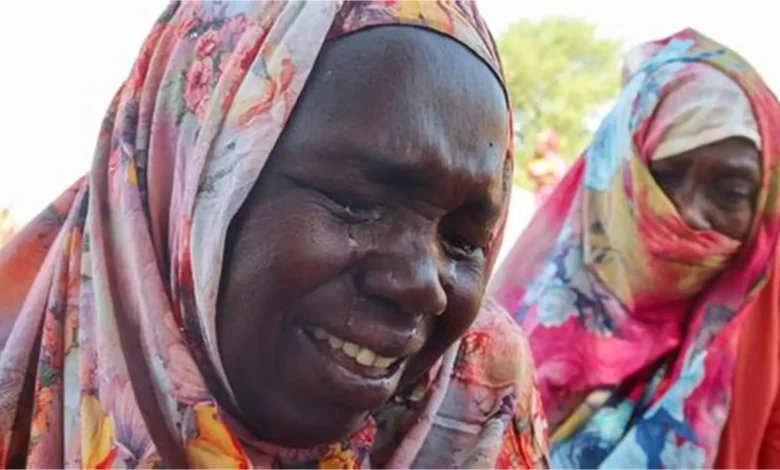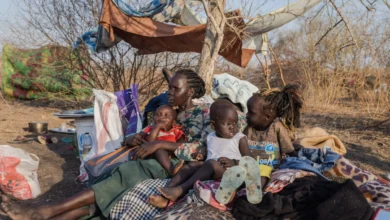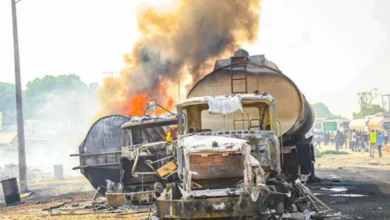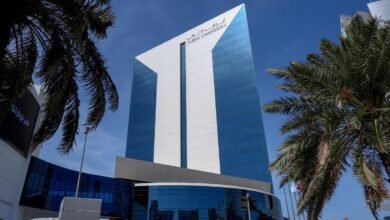
Sudan’s Silent Genocide: The Massacre No One Can Ignore
In El-Fasher, the desert wind carries the smell of ash and silence. In just three days, 1,500 lives were erased, families buried in shallow graves, children wandering through ruins where schools once stood. This is not history; it is happening now. Sudan bleeds in real time, yet the world scrolls past, distracted, indifferent. The largest displacement crisis on earth—12.6 million souls uprooted—unfolds in the shadows of our collective conscience. If ‘never again’ meant anything, it must mean Sudan today.
What is unfolding is nothing less than a silent genocide. The Rapid Support Forces (RSF) have executed civilians systematically in El-Fasher, including pregnant women and children, following a horrifyingly predictable pattern of violence. The massacre claimed 1,500 lives in just three days, but the death toll has already surpassed 3,000—and the true number is far higher. On October 27, 2025, RSF soldiers stormed homes, dormitories, and hospitals, executing over 300 patients, among them expectant mothers and children. In a single attack, 57 lives were extinguished, including 22 women and 17 children.
El-Fasher’s population has collapsed by 62 percent, from 1.11 million to just over 413,000, leaving 260,000 people trapped inside a city of fear. The RSF’s lineage traces back to the Janjaweed militias that massacred hundreds of thousands of non-Arab Darfuris in the early 2000s. Today, history repeats itself in Sudan, and the silence of the world risks becoming complicity. The question is no longer whether genocide is happening—it is whether humanity will act before Sudan is erased from its own soil.
RSF captures El Fasher and unleashes mass killings
“Despite commitments to protect civilians, the reality is that no one is safe in El Fasher. There is no safe passage for civilians to leave the city.” — Martha Pobee, UN Assistant Secretary-General for Africa
On October 26, 2025, the paramilitary Rapid Support Forces (RSF) seized control of El Fasher, the capital of North Darfur. This moment marked a devastating turning point in Sudan’s brutal civil war. With El Fasher’s fall, the RSF secured full control over Darfur, splitting the country in two and raising fears of permanent partition.
City Falls After 18-Month Siege
For 18 months, El Fasher endured a suffocating siege that trapped hundreds of thousands of civilians in catastrophic conditions. RSF fighters constructed 56 kilometers of barriers around the city, choking off food, medicine, and any chance of escape. Families were reduced to eating animal feed to survive.
When Sudanese army commander General Abdel Fattah al-Burhan admitted his forces had withdrawn “to a safer location,” it signaled the collapse of the last government stronghold in Darfur after nearly a year and a half of resistance.
The RSF quickly declared victory, boasting that it had “extended control over the city of El Fasher from the grip of mercenaries and militias.” The announcement underscored Sudan’s new reality: the RSF now dominates the entire western region, while government forces cling to central and eastern territories along the Red Sea.
Over 1,500 Killed in 72 Hours
Three days. At least 1,500 lives extinguished. The world remained silent.
According to the Sudan Doctors Network, RSF fighters massacred more than 1,500 civilians within 72 hours of entering the city. Government officials placed the toll even higher, claiming at least 2,000 deaths in the first hours alone.
Satellite imagery analyzed by Yale University’s Humanitarian Research Lab revealed chilling evidence: mass graves, piles of executed bodies, and “red discoloration” consistent with pools of blood. The lab’s director described the findings as “unlike anything I’ve ever seen in a quarter century of doing this work.”
Experts drew grim comparisons to Rwanda, warning that El Fasher’s bloodshed resembled “the first 24 hours of the Rwandan genocide.” Nathaniel Raymond of Yale cautioned that Sudan was witnessing a “Rwanda-level mass extermination of people trapped inside the city.”
Civilians Executed in Homes and Hospitals
Once inside El Fasher, RSF fighters launched door-to-door “clearance operations.” Eyewitnesses and verified videos show unarmed men, women, and children being gunned down as they tried to flee.
The most horrific massacre unfolded at the Saudi Maternity Hospital—the city’s last functioning medical facility. On October 28, RSF fighters stormed the wards, killing more than 460 patients and their companions. WHO Director-General Tedros Adhanom Ghebreyesus said he was “appalled and deeply shocked” by the slaughter.
The Sudan Doctors Network reported that RSF forces “cold-bloodedly killed everyone they found inside the Saudi Hospital.” Hospitals across El Fasher became “human slaughterhouses,” their sanctity shattered.
The violence extended beyond medical centers. Civilians were executed in their homes, on the streets, and even while attempting to bring food into the besieged city. Five men were shot dead for carrying supplies. Six health workers—including four doctors, a nurse, and a pharmacist—were abducted, with the RSF demanding over $114,000 for their release.
Survivors recount horrors of the El Fasher massacre
Image Source: NPR
The stories emerging from El Fasher are not of random violence but of a calculated campaign of terror. Survivors describe systematic brutality designed to break communities, erase identities, and terrorize the most vulnerable. Their testimonies reveal a chilling pattern: women, children, and ethnic minorities deliberately targeted in a strategy of extermination.
Women and Children Hunted in Displacement Camps
When RSF forces stormed a shelter for displaced families near El Fasher University, at least 25 women were raped at gunpoint. Eyewitnesses recall fighters selecting women and girls, dragging them away under threat of weapons. The violence sent more than 100 families fleeing into the night under gunfire.
Rasha, a 45-year-old mother, recounted her ordeal: “They forced me into a house and started sexually assaulting me. I told them I was old enough to be their mother. I cried.”
The brutality escalated in October at the Dar al-Arqam displacement center on university grounds. Drone and artillery strikes rained down on the camp, killing at least 60 people. Many bodies remained trapped beneath rubble. The local resistance committee reported: “Children, women, and the elderly were killed in cold blood, and many were completely burned.”
The Assassination of Hanadi and the Hunt for Medics
Among the victims was Dr. Hanadi Al-Nour Dawood, known as “Bit Al Fasher”—the Daughter of El Fasher. On April 13, 2025, she was killed by artillery fire at Zamzam Camp while treating the wounded. Remembered as “a warrior in a doctor’s coat,” she symbolized courage on the frontlines.
Her death marked the beginning of a campaign against health workers. The UN confirmed that three doctors remain captive in El Fasher. The Sudan Doctors Network reported six medical staff—four doctors, a pharmacist, and a nurse—were kidnapped, with ransoms exceeding $114,000 demanded for their release.
RSF fighters even stormed hospitals to execute patients in their beds. Nurse Nawal Khalil of El Fasher South Hospital recalled: “They killed six wounded soldiers and civilians in their beds—some of them women.”
Mass Graves and the Shelling of Fleeing Civilians
For those who tried to escape, the risks were just as deadly. Hayat, a mother of five, described how seven RSF fighters invaded her home, searched her undergarments, and murdered her 16-year-old son before her eyes. As she fled, she saw “many dead bodies lying on the ground and wounded people left behind in the open because their families couldn’t carry them.”
Adam, another survivor, watched his two sons—aged 17 and 21—executed in front of him. “They told them they had been fighting for the army, and then they beat me on my back with a stick,” he said.
Escape routes were littered with RSF checkpoints where civilians faced extortion, arbitrary arrests, looting, sexual violence, and harassment. Nearly all of a group of 500 civilians attempting to flee were killed or captured. Survivors said RSF fighters separated people by gender, age, and ethnicity, holding many hostage until families paid ransoms ranging from 5 million to 30 million Sudanese pounds (€7,000–€43,000).
How the El Fasher massacre mirrors Darfur’s dark past
Image Source: Al Jazeera
The atrocities in El Fasher are not isolated—they echo the darkest chapters of Darfur’s history. The same perpetrators, the same victims, and the same tactics resurface with terrifying precision.
RSF’s Roots in the Janjaweed
The Rapid Support Forces trace their lineage directly to the Janjaweed militias—Arab horsemen who terrorized Darfur in the early 2000s. Under the command of Mohamed Hamdan Dagalo, known as Hemedti, these militias were restructured into a paramilitary force in 2013. But their essence never changed: Arab fighters targeting non-Arab communities. The Janjaweed simply donned new uniforms while carrying forward old allegiances and prejudices.
Ethnic Cleansing Repeated from 2003
The blueprint is hauntingly familiar. First, a siege to starve communities of food, water, and medicine. Then aerial bombardments, followed by ground assaults and door-to-door killings. Survivors are eliminated, homes and wells destroyed, cultural sites erased to prevent return.
In 2003, attackers rode on horseback. In 2025, they deploy drones. But the methodology remains the same. Hospitals, schools, and displacement camps—once sanctuaries—become deliberate targets.
Zaghawa, Masalit, and Fur Communities Under Attack
The most chilling continuity lies in the targeting of specific ethnic groups. The Zaghawa, Masalit, and Fur—non-Arab tribes collectively labeled “Zurga” (Black)—once again bear the brunt of extermination campaigns. Survivors report RSF fighters openly declaring their intent to “clean” Darfur of these communities.
Checkpoints and raids are used to identify victims by ethnicity, with fighters demanding identification documents before carrying out executions. This is not random bloodshed. It is systematic ethnic cleansing, echoing the genocide of two decades ago.
Why the world failed to stop Sudan’s silent genocide
Image Source: Council on Foreign Relations
In three days, 1,500 lives were erased. The world barely blinked. Sudan’s Silent Genocide is not only a story of atrocities committed on the ground—it is also a story of international failure. The Massacre No One Can Ignore unfolded in full view of satellites, aid agencies, and diplomats. Yet, despite the warnings, the world chose paralysis over protection.
1. Ignored Warnings from Yale and the UN
The evidence was there. Yale University’s Humanitarian Research Lab released satellite images showing mass graves, bloodstains visible from space, and door-to-door clearance operations. The UN issued repeated alerts that El Fasher was on the brink of catastrophe.
In fact, Nathaniel Raymond of Yale described the killings as “a Rwanda-level mass extermination of people trapped inside the city.” UN officials echoed the alarm, warning that 12.6 million displaced Sudanese faced starvation, violence, and ethnic cleansing.
Unfortunately, these warnings were met with statements of “concern” rather than decisive action. The world had the proof, but not the will.
2. Diplomatic Inaction by Powerful States
Simultaneously, influential powers with leverage over Sudan’s warring factions failed to act. Once-vocal advocates for Darfur shifted their focus to other crises, while others—accused by rights groups of enabling the RSF—blocked stronger measures at international forums.
Evidently, geopolitical interests outweighed humanitarian urgency. Instead of coordinated sanctions, arms embargoes, or humanitarian corridors, the world witnessed diplomatic hedging—a refusal to confront perpetrators directly. This silence gave the RSF the space to escalate its campaign of terror
3. Global Conferences that Sideline Atrocities
When international leaders gathered to discuss Sudan’s future, the atrocities in Darfur were pushed to the margins. The focus turned to ceasefire frameworks and economic stabilization, while the massacre of civilians was reduced to a footnote. This sidelining mirrored the mistakes of two decades ago, when debates dragged on as villages burned. The result was the same: perpetrators emboldened, victims abandoned.
What satellite images and experts reveal about the killings
Image Source: The Guardian
Satellite images reveal the brutal truth of El Fasher’s massacre with stark clarity. The orbital record now holds permanent documentation of what happened on the ground, showing undeniable evidence of genocide.
Yale HRL confirms mass graves and bloodstains
Yale University’s Humanitarian Research Lab has made a groundbreaking discovery in human rights monitoring – bloodstains visible from space. The lab identified “a systematic and intentional process of ethnic cleansing” that targeted Indigenous non-Arab communities through forced displacement and execution. Recent satellite imagery showed new clusters of objects matching human bodies. Nathaniel Raymond, executive director of the Yale Lab, discovered evidence of “door-to-door clearance operations” and ground discoloration that matched blood patterns.
Hospitals and shelters bombed by drones
RSF drone strikes killed at least 60 people at Dar al-Arqam displacement center on October 11. The Saudi Maternal Teaching Hospital suffered a devastating drone attack in January 2025, which claimed more than 70 lives. The hospital faced five attacks in a single month by October 2025, and the violence ended up with the execution of 460 patients and their companions.
Testimonies from health workers and aid groups
The World Health Organization documented 189 attacks on health facilities this year. These attacks resulted in 1,670 deaths and 419 injuries. Save the Children’s Francesco Lanino shared survivors’ accounts: “It’s not only RSF who are looking for civilians, looking for people to rob, to abuse or kill”.
El Fasher stands as proof of humanity’s darkest capabilities. 1,500 lives lost in 72 hours. 12.6 million displaced. 30 million in need of aid. These are not numbers—they are a mirror of our collective failure.
Twenty years after Darfur’s first genocide, the same perpetrators use the same tactics against the same victims. The RSF, born from the Janjaweed, has simply traded horses for drones, but the methodology remains unchanged: siege, bombardment, execution, erasure.
The survivors’ voices echo across decades: women raped at gunpoint, children executed in their homes, hospitals turned into slaughterhouses. This is not random violence. It is calculated genocide.
Yale researchers, UN agencies, and humanitarian groups have gathered undeniable evidence. The question is no longer what is happening in Sudan. The question is: why has the world allowed it to continue?
Sudan bleeds while the world looks away. This massacre demands acknowledgment, action, and accountability. History will judge harshly those who knew yet did nothing.
How many more must die before silence becomes impossible to maintain?






